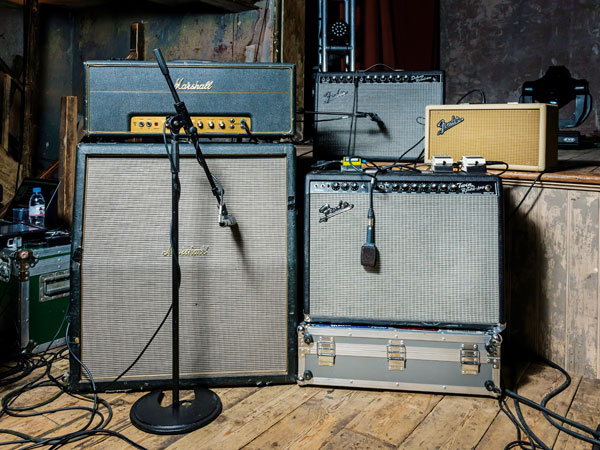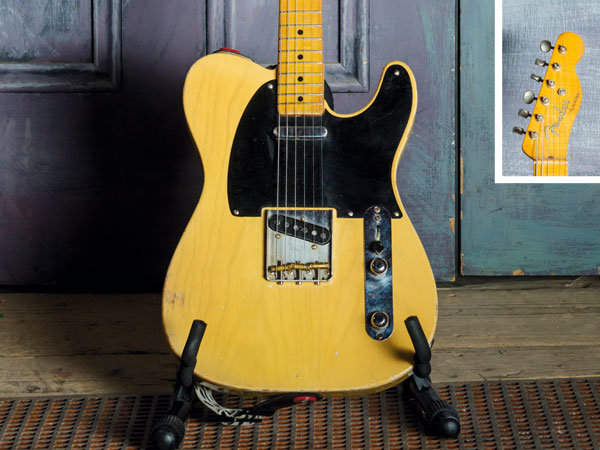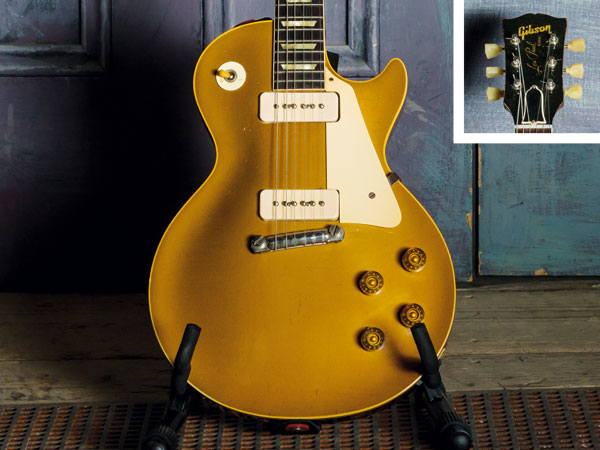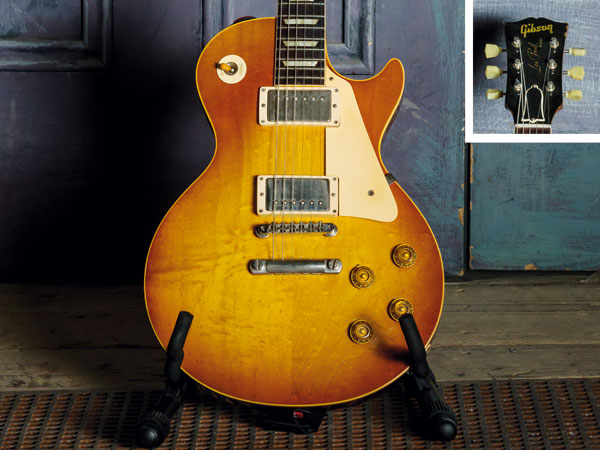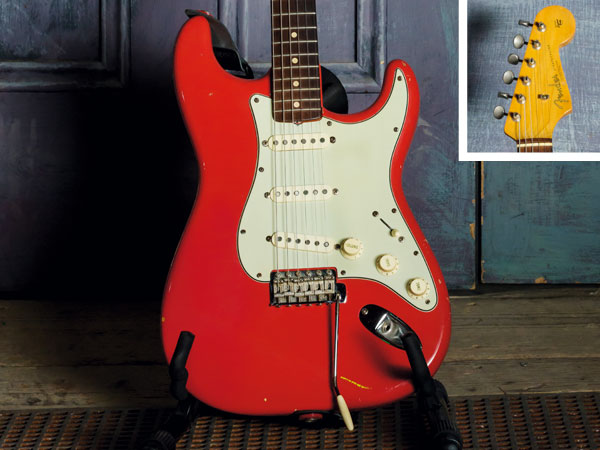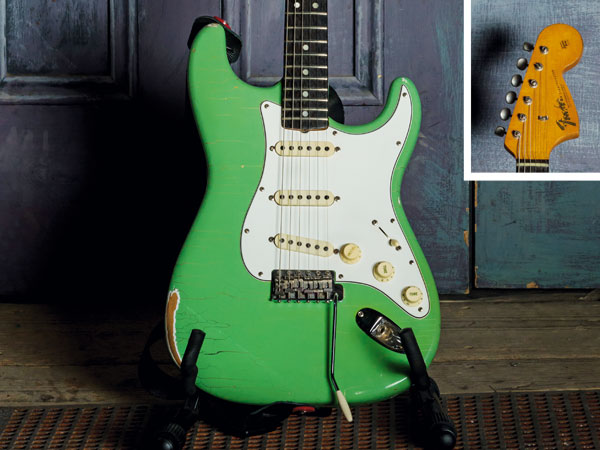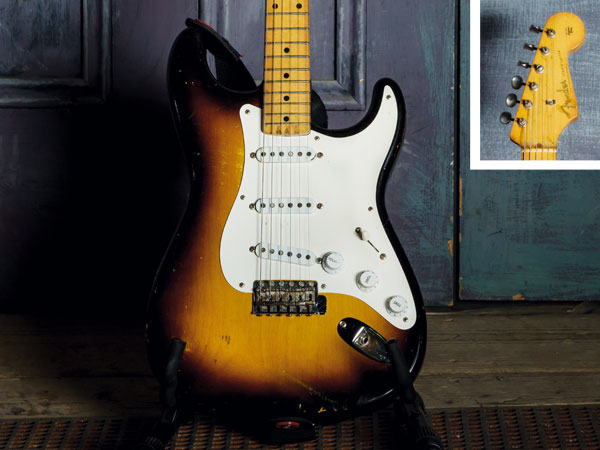Seventh heaven: the stunning vintage guitars of London's Seven Decades show
Rare guitars that span 70 years of rock history
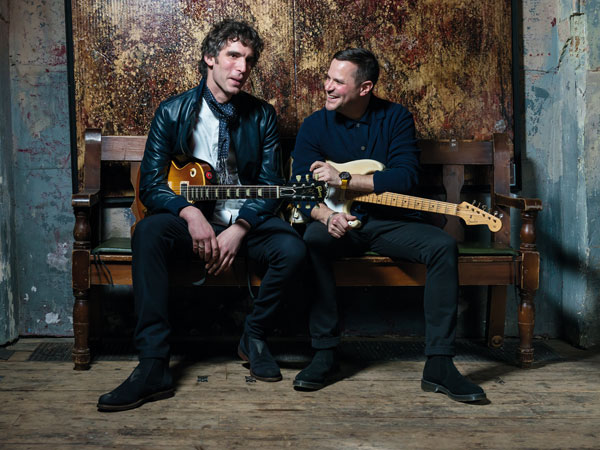
Introduction
Standing strong in London's East End since the mid 1800s, Wilton's Music Hall is the world's oldest surviving grand music hall - a building that oozes musical history from its very foundations. And this year, it's home to a prestigious collection of some of the rarest guitars known to man, as it plays host to Seven Decades, a hugely impressive two-hour live music spectacular.
The show is the brainchild of guitar-adoring best friends Phil Hylander and Michael Ross. Combining stunning video projections and voiceover from Fun Lovin' Criminal Huey Morgan with a top notch rock 'n' roll band, Seven Decades charts the history of the humble electric guitar from the 1950s right up to the present day. Ultra-rare vintage Fender Stratocasters and Telecasters, Gibson ES-335s and Les Pauls all take centre stage, as they bring the music of the last seven decades to life.
"It's a chance for collectors to actually hear their guitars cranked up through a '59 Plexi head" -Michael Ross
While Michael and Phil co-wrote and directed Seven Decades together, it's talented guitarist Mike who fronts the live band and chucks out fiery virtuosic versions of axe classics from every conceivable genre - Elmore James to The Police, Led Zeppelin to the Sex Pistols.
Guitarist meets the men behind the music to find out how the show came together and how this collection of gorgeous instruments arrived on the stage.
What inspired you to put the Seven Decades show together in the first place?
Phil Hylander: "Well, Mike and I had been building up this really amazing collection of guitars and we always used to get really frustrated about, 'How do you make the most of this superb collection of guitars?' It's so unrewarding having them on a wall somewhere because they shouldn't just be static pieces of art.
We started to write the show three years ago as a working exhibition of guitars and, of course, we have this obsession with these four guitars in particular [Fender Stratocasters, Fender Telecasters, Gibson ES-335s and Gibson Les Pauls]. So, the show has partly been driven by the guitars we love but then also by the music we love as well.
It has a really beautiful appeal because it's about the history of an instrument that 70 years ago was created in a certain way and looked a certain way and, 70 years later, we still play pretty much identical aesthetics."
Do you two own all the beautiful guitars that are featured in the show?
PH: "Mike and I own the bulk of them but then we have two other really good friends that also contribute to the collection, which includes some of the Strats."
Michael Ross: "It's a chance for collectors to actually hear their guitars cranked up through a '59 Plexi head, which is like a dream for a lot of them!"
PH: "There's a real culture with classic cars of collectors having professional drivers to race them. That similar approach hasn't really ever existed with guitar collections."
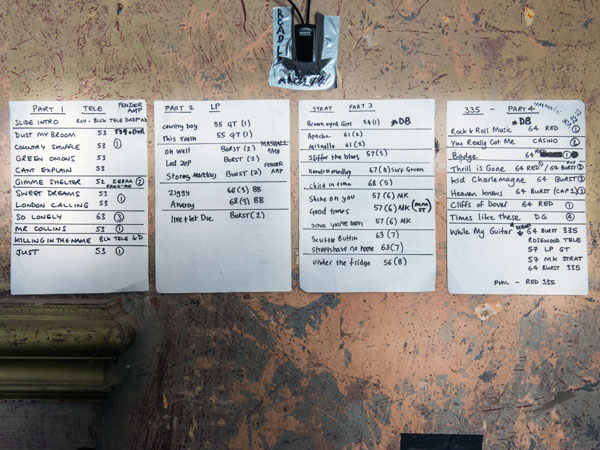
Finding the format
And how did you come up with the format for the show?
"We didn't just want to be delivering it as, 'Oh, this is this guitar and this is another guitar...' We wanted to play them for real and make it emotional" - Michael Ross
MR: "With the show, we didn't just want to be delivering it as, 'Oh, this is this guitar and this is another guitar...' We wanted to play them for real and make it emotional and make it really mean something, so the guitars are coming alive. They've all got stories to tell. If you pick up a guitar from 1954, it's got a big history and that has got to come out."
PH: "We thought that the right format was this kind of hybrid between the musical concept and a documentary with historic images and a beautiful abstract light show. That means you're telling a proper story with proper words and proper archive footage.
"We wanted to make sure that the links between songs were informative and interesting and educational, but they also had to look pretty. That was quite a task."
It must have also been a challenge to choose the tracks...
MR: "I think it was quite easy to decide on the artists, but then to pick the actual tracks was more of a challenge because we had to balance the songs we love and want to play with songs that we know the audience wants to hear.
"Sometimes, we did want to get a little deeper with it. We do a Roy Buchanan song and a lot of people who aren't guitar heads won't know anything about Roy Buchanan. We do Sweet Dreams and people come back to us afterwards and ask, 'What was that song? That was really beautiful.' It's lovely to help reinvigorate interest in an artist like him, where he's largely been forgotten. That's really a buzz, you know.
"Another thing is that we can recycle the whole show by just having a whole different set list of songs and that's great, too. Like with Hendrix, we're currently playing Purple Haze and Little Wing but we could be playing Freedom by him instead."
PH: "Yeah, Mike and I basically have 50 per cent more songs and visuals prepared, so on three different nights, the show could be completely different."
MR: "We could probably do the Strat all night if we wanted - 'Seven Decades Of The Single-Coil Pickup'!"
PH: "Or 'Seven Decades Of Out Of Phase'!"
How far did the guitars tend to pick themselves for a particular track?
"The guitar choice isn't designed to match the year of the song. It matches the guitar the player would have used on that song" - Phil Hylander
PH: "Well, you begin by knowing that you've got to cover the decades and respect each one. Then, you have an idea of a setlist and then that setlist informs the right guitar choices. It all tends to solve itself in that process.
"There's always a right song for each guitar but - just to be clear - the guitar choice isn't designed to match the year of the song. It matches the guitar the player would have used on that song."
MR: "With Red Hot Chili Peppers, for example, John Frusciante played Under The Bridge on a '56 Strat, so we've got a '56 Strat."
Have you managed to match all the guitars all the way through the set?
PH: "Bar one or two guitars, I think we've matched everything."
MR: "We do The Shadows on a '61 Fiesta Red because there are very few '59 Fiesta Reds around."
PH: "But we will buy one of those one day - that would be perfect! Then Mike plays David Bowie on a '68 black Les Paul but Mick Ronson would have stripped it back to wood. We haven't done that because we prefer it in black."
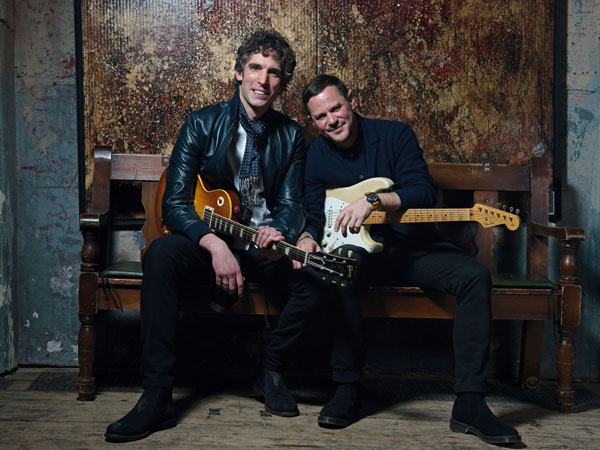
Talking tone
Tonally, do you find every vintage guitar has its own unique sound and feel?
MR: "Hugely! If they're right and if they're good, they just sound amazing. They all have their own personality so they're all very different. You can feel when you're playing an alder body compared to an ash body.
"This show is like dodging bullets every second because you've got guitars coming at you all the time" - Michael Ross
"It can all depend on the quality of the build, the type and age of the wood, and the quality of the pickups and the way they're hand-wound. As with any quality instrument, they get better over time, just like a great violin or a great piano."
Playing around 20 different classic guitars across 40-plus stylistically diverse tracks must be an incredible challenge...
MR: "From a technical point of view, it's the most unnatural ground to be in, because you're taking 25 guitars and you're going up there and having to play them like you really mean it on every one!
"We all have our favourite guitars. I mean, we've got a '57 Goldtop, which is a stunning guitar, but personally I could just play the '57 Strat all day long!
"This show is like dodging bullets every second because you've got guitars coming at you all the time. The transitions can be hard work, but our crew have just come off tour with Foo Fighters. You can trust these guys and they do a great job passing me the guitars and looking after them all.
"Also, no matter how much you rehearse for it all, these guitars have different output levels and, technically, you've got to be able to handle all of that. It is literally like crossing no man's land and then you've actually got to arrive at something that is presentable!
"When we were writing the 335 section, we got to a certain point and we were like, 'We're going to have to play Cliffs Of Dover by Eric Johnson...' and the thought of that was daunting, in terms of delivering it on a guitar that you don't expect it to be on. But that is the story and that's why you've got to do it."
Mike, is there a song in the set that you find the most difficult to play?
MR: "The hardest one for me is Heaven Knows I'm Miserable [Now] by Johnny Marr [The Smiths]. It beats me up every time. It kills me..."
"We think that this nexus between the history of the guitar and the history of music has really, really big appeal" - Phil Hylander
PH: "But then you didn't grow up listening to The Smiths like I did..."
MR: "You say, 'Can you stop playing it like Nile Rodgers?'"
PH: "Yeah, I have said, 'It's not meant to be that funky!'"
How much improvisation is there during the show?
MR: "It's all about that, because if there's no improvisation, what's the point? None of the songs you're hearing were played the same live as they were in the studio by all these artists. With Whole Lotta Love - listen to the recorded version and then listen to Zep do it live. It's all over the place, it's mental and that's what it's all about!"
PH: "The show is meant to be quite edgy. Any live band performance is meant to be edgy and that's where this differs from a pure West End kind of show."
Where are you aiming to take Seven Decades in the future?
PH: "We think that this nexus between the history of the guitar and the history of music, and the incredible sustainability of this design and this invention has really, really big appeal beyond just guitar players and guitar fans."
MR: "We've played here [at Wilton's Music Hall] seven times and pretty much sold it out seven times and the audience reaction has been really encouraging. We've had children coming to see it right the way through to 70 year olds. It's an education for many people."
PH: "We think this show really lends itself to big theatres, but theatres where people will take the time to listen to the story as well as just the music, places like the Royal Albert Hall and Carnegie Hall... big venues that have a kind of legacy of respect for what's happening onstage. That really makes sense to us."
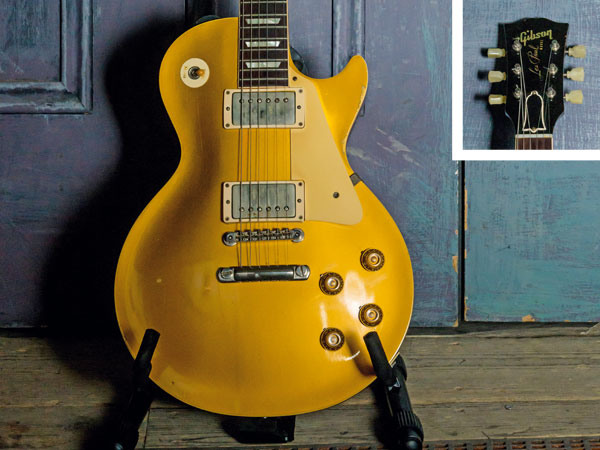
1957 Gibson Les Paul Goldtop
This '57 Goldtop is notable as being the first year the Les Paul swapped the P-90s for humbuckers.
"Humbuckers on a Les Paul - it's just a match made in heaven, isn't it?" Michael enthuses.
"It's a great guitar and has almost a sort of Allman Brothers vibe to it. This is one of the guitars I play for the encore on While My Guitar Gently Weeps."
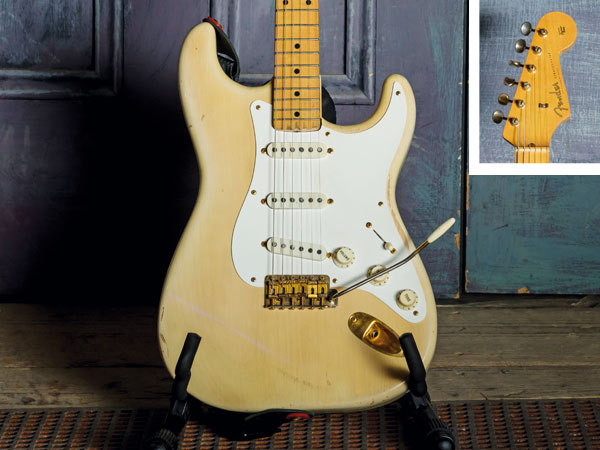
1957 Fender Stratocaster
This '57 Strat isn't your average guitar, as Michael explains:
"This one is one of the rarest we have. It's a 'Mary Kaye' with the gold hardware and it's nicely worn.
"Even though Gilmour didn't play one, I use it for Shine On You Crazy Diamond because it's just got the best clean sound."
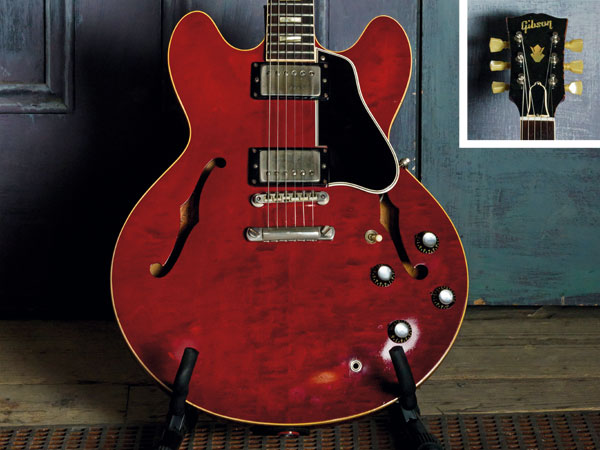
1964 Gibson ES-335
This '64 ES-335 is one of two used in the show, used to play Eric Johnson's Cliffs Of Dover, among several others.
"This is my favourite 335. I love it!" Michael enthuses. "It's had a refret and there are a couple of things that aren't quite original on it, but it's a player's guitar - the real deal! You pick up and, bang, you're in!"
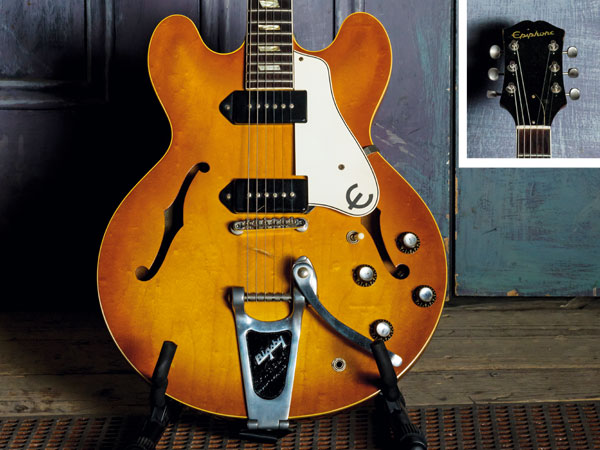
1963 Epiphone Casino
This '63 Casino is an unusual Iced Tea hue, and that's not all: "It's 100 per cent original and in immaculate condition," says Michael.
"It's exactly the same as Dave Davies had and a lot of those guys from that era played them. It's beautiful for You Really Got Me, but it's not beautiful for everything. It's beautiful for what it does"
